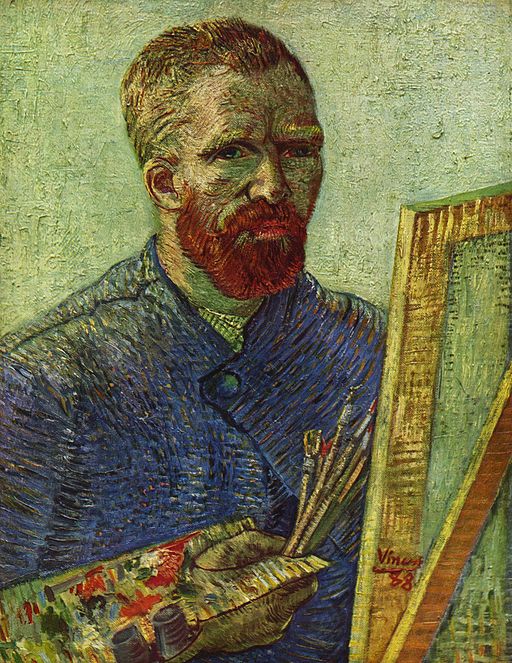
Self-Portrait by Vincent van Gogh
Many people attribute the shimmering, swirling colors and bold, choppy brushwork in Vincent van Gogh’s paintings to his lifelong battle with mental illness. Although his world-famous paintings now sell for millions, during his life van Gogh lived and worked in poverty, surviving on financial assistance from his devoted brother Theo. At times, van Gogh was so poor that he couldn’t even afford food because he had spent all his money on oil paints; his passion for painting overriding his basic human instincts.
As his mental instability worsened, van Gogh ate some of his oil paints, which contained lead. Ingesting the lead in his oil paints may have led to van Gogh’s seizure in 1890, precipitating his mental and physical decline that would lead to his self-inflicted death half a year later.
Lead is just one of the many toxins that were once a common ingredient in many oil paints. Mercury, chromates, sulfides, barium and antimony are just some of the other toxic ingredients that were used to create oil paints. The popular Cadmium Reds, Oranges, and Yellows contained cadmium, while cobalt contributed to Cobalt Blue and Cerulean Blue. Scheele’s Green rose to popularity in the 19th century, replacing the previous green pigments to become the green of choice for artists, used by Turner and Manet. Sheele’s Green contained arsenic.
Thankfully, the oil paints that are manufactured today contain very little of these toxic substances. Oil paint tubes are required to carry a warning label if they contain even the slightest traces of toxic materials. Although these labels cause some artists concern, the risks of becoming poisoned from modern commercial oil paints are quite minor if the paints are used as intended.
Although it may go without saying, artists should never follow in van Gogh’s lead by eating their oil paints. Likewise, artists should never put paintbrushes in their mouths or open stubborn tubes of paint with their teeth. Although you’d actually have to eat an entire tube of paint to become sick, it’s not worth the risk of getting oil paints anywhere near your mouth to begin with. Maintaining clean studio habits, which includes minimizing skin contact with oil paints, will assure that today’s artists run minimal risk of toxic exposure through their oil paints.
Be a Artist in 2 minutes with Segmation SegPlay® PC (see more details here)







Veru interesting, I’m a painter and even I prefer to use only pencil and paper in gray scale, I also paint sometimes with oil paint or acrilic. So thank you very much, I will take this in mind next time I paint in colors 😉
PD: Tank you for visiting Ian’s Green Diary, glad you like it.
I am glad you like this blog! Thanks for your comments!